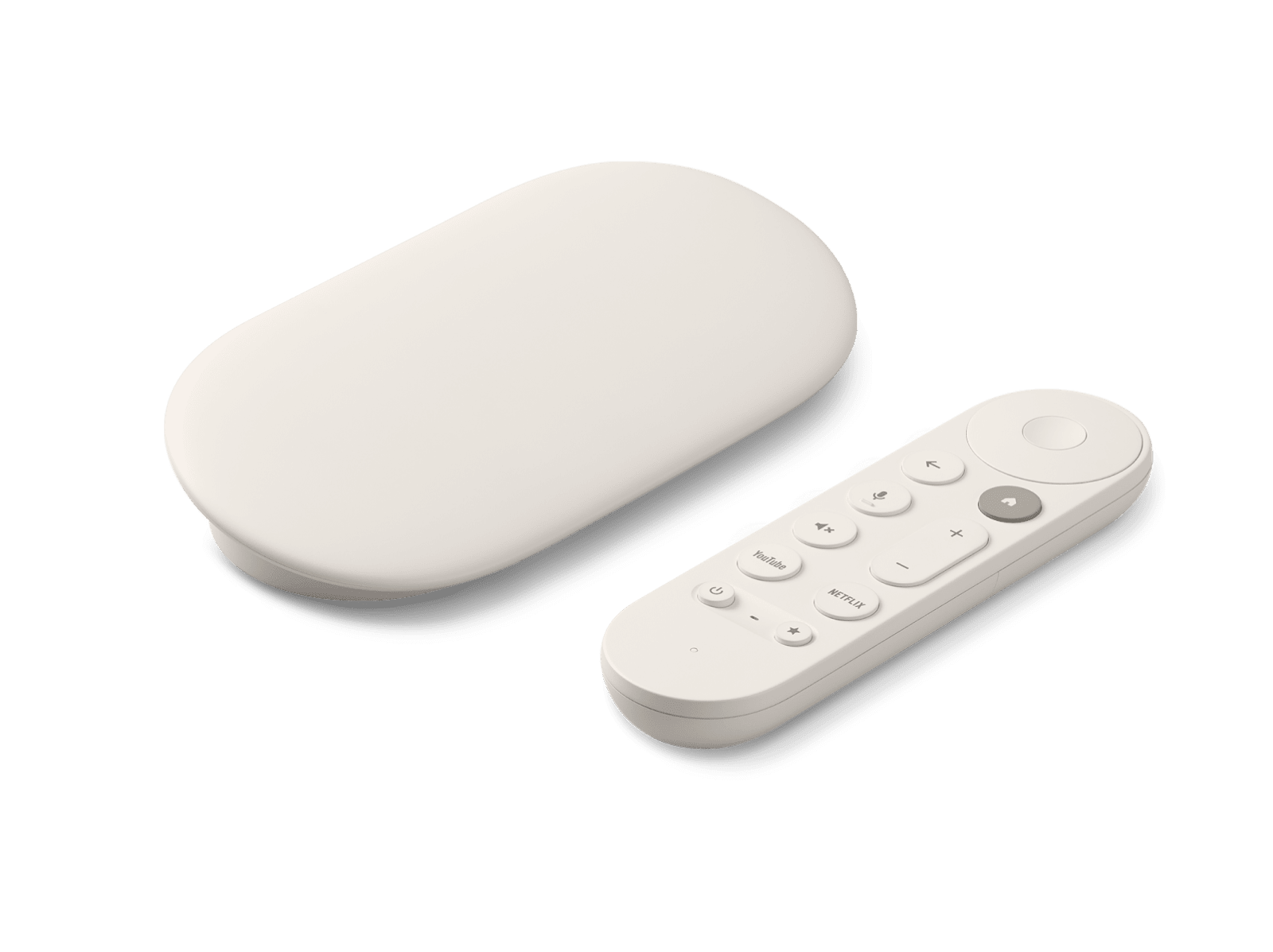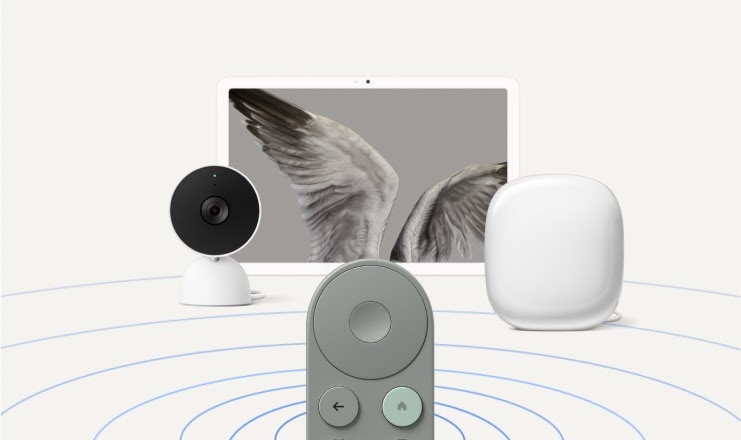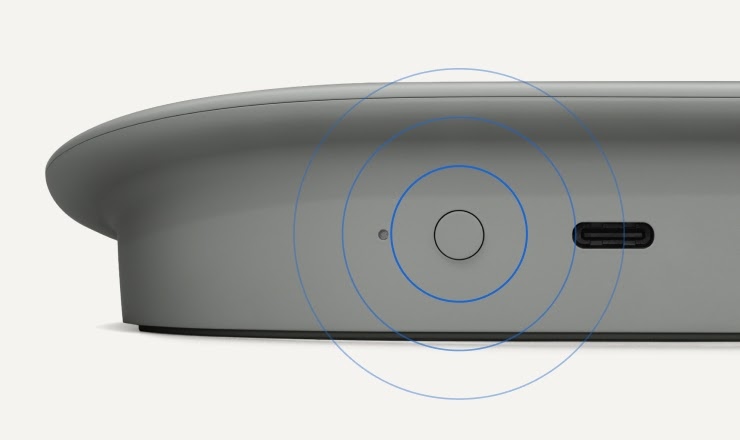The Google TV Streamer 4K is the natural successor to the Chromecast, delivering a smoother streaming experience, advanced connectivity, and intelligent home control. Designed for users already invested in the Google ecosystem, this device promises to become the new entertainment centerpiece of your home. But is it really worth it compared to cheaper alternatives?
Design and Build Quality — Designed to be seen
With a design meant to be displayed prominently, the Google TV Streamer moves away from the “hidden dongle” concept. It’s larger than the Chromecast and offers additional ports like USB-C and Ethernet, though we miss having a second USB port for greater flexibility.

The finish is clean and modern. Built with 65% recycled plastic, it demonstrates environmental commitment. The construction feels solid and premium, with a 160.7g weight that provides stability without being excessive. The absence of front-facing lights maintains discretion, though a status LED would be helpful for checking functionality from a distance.
Pros
Decorative design that blends with any environment
Quality materials and solid construction
Sustainable construction
No front lights for distraction-free viewing
Cons
HDMI cable not included (sold separately)
Takes up more space than traditional dongles
Single USB-C port limits expansion options
No visible status LED from the front
Performance and User Experience — The hardware we’ve been waiting for
During testing, the improvement over the previous Chromecast is immediately noticeable. Navigation through the Google TV interface is smooth, without the frustrating lag that characterized the previous model. Loading apps like Netflix, YouTube, and Amazon Prime Video is noticeably faster, and switching between apps happens without perceptible delays.
4K HDR content plays without interruption, even when multitasking or having multiple apps running in the background. During our testing with casual gaming and local streaming apps like Moonlight, performance was stable and responsive. Occasionally, some apps require a fresh restart, but it’s a minor issue that doesn’t affect the overall experience.
Initial setup takes approximately 15 minutes, during which the device updates automatically. The ability to create multiple family profiles with specific parental controls adds versatility for households with children.
Pros
Smooth navigation without perceptible lag
Fast app and content loading
Excellent 4K HDR playback
AV1 codec support (absent in previous Chromecast)
Simple setup and family profiles
Good performance for casual gaming and local streaming
Cons
Occasional app restarts from scratch
Wi-Fi 5 only (802.11ac), no Wi-Fi 6
Performance may suffer on heavily congested networks
No lossless audio support (Dolby TrueHD, DTS)
We also reviewed the Samsung Odyssey OLED G8, a display choice for your Google TV streaming setup.
Connectivity — Wired vs wireless, finally with options
The inclusion of a Gigabit Ethernet port is one of the most practical improvements. In our testing, the difference between Wi-Fi and wired was notable, especially on congested home networks. For users with multiple connected devices or high-speed connections, wired offers superior stability and lower latency for 4K content.
Wi-Fi 5 works fine for most scenarios, though the absence of Wi-Fi 6 feels like a missed opportunity for a 2024 device. During testing on saturated networks, the wireless connection showed occasional slowdowns that didn’t occur with Ethernet.
Bluetooth 5.1 allows headphone connections, though it’s limited to one pair simultaneously. Latency is minimal and synchronization with devices like Pixel Buds Pro for spatial audio works seamlessly.
Smart Ecosystem — Home automation from your couch
The integrated smart home control panel represents a genuine evolution in streaming devices. Accessing controls for lights, thermostats, and cameras without leaving Netflix proves more useful than expected. During our testing with Nest devices and Matter-compatible hardware, response was quick and reliable.

Viewing security cameras in full-screen surpasses the experience of dedicated displays like Google Nest Hub. However, smart doorbell notifications arrive with a 7-8 second delay, and two-way conversations with visitors aren’t possible through the TV.
As a Thread and Matter hub, it simplifies smart home device setup. Cross-brand interoperability works as promised, though it’s limited to devices marked as “favorites” in the Google Home app.
Pros
Integrated home control without leaving apps
Excellent full-screen camera viewing
Functional Thread and Matter hub
Quick smart device response
Intuitive interface for basic controls
Cons
Doorbell notification delay (7-8 seconds)
No two-way communication with visitors
Some cameras appear as “black boxes” when off
Limited to Google Home “favorites”
Cannot remotely activate cameras from TV
Check out our full Sonos Arc Ultra review to round out your entertainment system.
Remote Control — Tangible daily improvements
The redesigned remote addresses several pain points from the previous model. Volume buttons on the front eliminate accidental presses—a seemingly minor change that significantly improves daily experience. The non-slip texture on the back and improved grip are immediately noticeable.
The “Find My Remote” function is surprisingly useful. Whether pressing the physical button on the device or using voice commands, the remote emits a sound for 30 seconds—enough time to find it even buried in couch cushions.

The customizable button adds real versatility. During testing, we alternately configured it to open YouTube, access the home panel, and switch HDMI inputs. Response is immediate and customization persists between reboots.
Pros
Relocated volume buttons prevent accidental presses
Non-slip texture improves grip
“Find My Remote” function really works
Customizable button with immediate response
Better button layout for nighttime use
Cons
Still uses AAA batteries instead of USB charging
No button backlighting for dark room use
Conclusion
The Google TV Streamer 4K represents a mature and necessary evolution of the Chromecast concept. Its strength lies in combining smooth streaming, intelligent home control, and deep Google ecosystem integration in a polished, functional package.
It’s ideal for users seeking a modern entertainment center without complications, especially those already using Google devices or planning to build a smart home. Performance improvements, connection stability, and advanced features justify upgrading from previous models.
However, its premium positioning puts it against more affordable alternatives that adequately cover basic streaming needs. The final decision will depend on how much you value smart home functions, Google integration, and the promise of long-term updates.
Technical Specifications
| Feature | Details |
| Resolution | Up to 4K HDR, 60 FPS |
| Video | Dolby Vision, HDR10, HDR10+, HLG |
| Audio | Dolby Atmos, Dolby Digital/Plus |
| Memory | 4 GB |
| Storage | 32 GB |
| Ports | HDMI 2.1, USB-C, Ethernet |
| Connectivity | Wi-Fi 802.11ac, Bluetooth 5.1 |
| Dimensions | 6.4 x 3.0 x 1.0 inches |
| Weight | 160.7g |
| Operating System | Android TV with Google TV |
| Smart Home Compatibility | Matter, Thread |
| Materials | 65% recycled plastic |
Alternatives
Onn 4K Pro: An excellent budget option. Offers similar Google TV experience, “Find My Remote” function, and always-on microphone, but lacks Matter/Thread support and guaranteed long-term updates.
Fire TV Stick 4K Max: Direct competitor with similar performance, Dolby Vision and Atmos support, but with less Google ecosystem integration and focus on Alexa for smart home functions.
Nvidia Shield TV Pro: The premium option for demanding users. Offers superior power, lossless audio, Plex server capabilities, advanced gaming, and retro emulation, though at a significantly higher price point.
